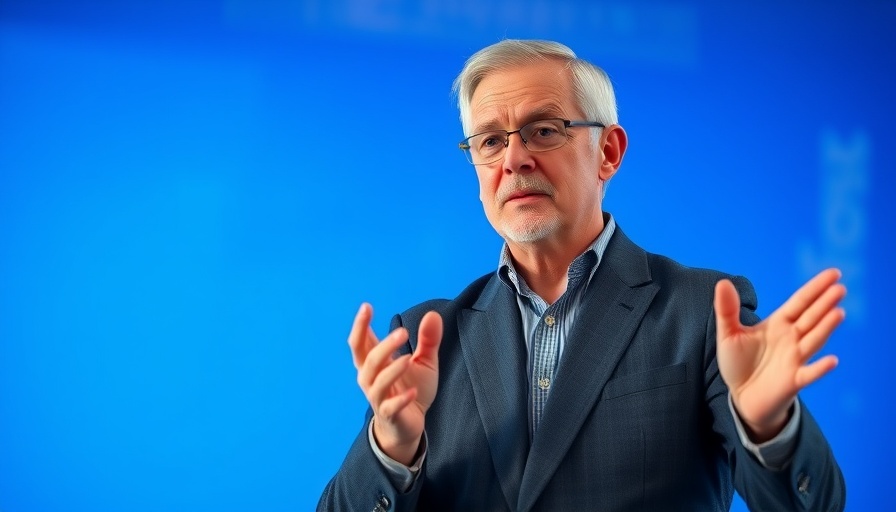
The Struggles of Hybrid Work Environments
The advent of hybrid work environments has sparked a significant debate among leaders and employees worldwide. As highlighted in David Nilssen's TEDx talk, companies like Goldman Sachs, Google, and Tesla are among the 90% of U.S. firms planning to return to office-based work models by 2024. Yet, one cannot help but question the rationale behind this trend. Despite the inclination to mix remote and in-office work, many find hybrid work to be a clumsy and inefficient compromise.
In 'Why hybrid work fails both companies and employees', the discussion delves into the challenges faced in hybrid environments, prompting a deeper analysis of the advantages of fully remote practices.
Nilssen articulates that hybrid work models create disparities between employees who are physically present in the office and those who work remotely, a phenomenon that can lead to miscommunication and a feeling of exclusion for remote workers. This dual-class workforce diminishes trust, hampering collaboration and effectiveness in operations.
Reassessing the Need for a Physical Office
Consider the analogy of maintaining a lavish home that one only occupies sparingly. Companies investing in hybrid work policies similar to this analogy bear the costs of maintaining an office environment while failing to utilize its full potential. Nilssen’s decision to transition fully to remote work exemplifies how organizations can optimize their operational footprint by embracing remote-first principles.
In today's economy, attracting talent is paramount. With a reported 77% of employers struggling to secure high-quality candidates, shifting to a fully remote model can enable organizations to tap into a global talent pool, unhindered by geographical constraints. This gives them a competitive edge over traditional companies that adhere to in-office expectations.
Crafting Effective Onboarding and Training Processes
When adopting remote work, redefining training and onboarding processes is crucial. Traditional practices, based primarily on physical presence, fall short in a virtual landscape. Nilssen emphasizes that companies must consciously design their onboarding to ensure new hires are integrated smoothly, enhancing their confidence from day one.
This involves not only providing new team members with essential resources and support but also fostering relationships based on clarity and mutual understanding. An effective onboarding experience can make a world of difference between retention and turnover in a remote setup.
Empowering Leadership in Remote Work Culture
One of the core issues facing hybrid models is the management by sight mentality, where leaders monitor their teams’ productivity through physical presence. In a successful remote environment, Nilssen argues, leaders must pivot towards results-driven management practices. This involves communicating clear expectations and maintaining ongoing progress checks.
Such practices ensure that employees feel empowered rather than micromanaged, leading to enhanced motivation and satisfaction within the workforce. Leadership transition from oversight to partnership cultivates a stronger organizational culture that values input and contribution rather than mere visibility.
Building an Inclusive Remote Work Culture
Inclusivity is another cornerstone of a thriving remote work environment. Companies must acknowledge employees as individuals with their own cultures and traditions. By honoring diverse backgrounds and practices, organizations foster a sense of belonging. Nilssen's reference to celebrating diverse holidays exemplifies how integrating appreciation into company culture combats feelings of isolation among remote workers.
This connection transcends beyond just formal recognition; it builds a community where team members feel valued. An inclusive environment not only enhances employee satisfaction but also reduces turnover rates.
Future Implications of Remote Work
Looking forward, the trend towards remote and hybrid work models is unlikely to abate anytime soon. The challenges of the workforce, including declining birth rates in developed countries leading to talent shortages, necessitate an evolving approach to employment. Companies must engage proactively with this shifting landscape to create sustainable models that thrive irrespective of geographical limitations.
As the world adapts, organizations must leverage technology not only for productivity but for nurturing relationships. The future belongs to those companies that embrace a remote employee-centric ethos, not just as a reaction to a global pandemic but as an ongoing commitment to inclusivity and innovation.
 Add Row
Add Row  Add
Add 




Write A Comment